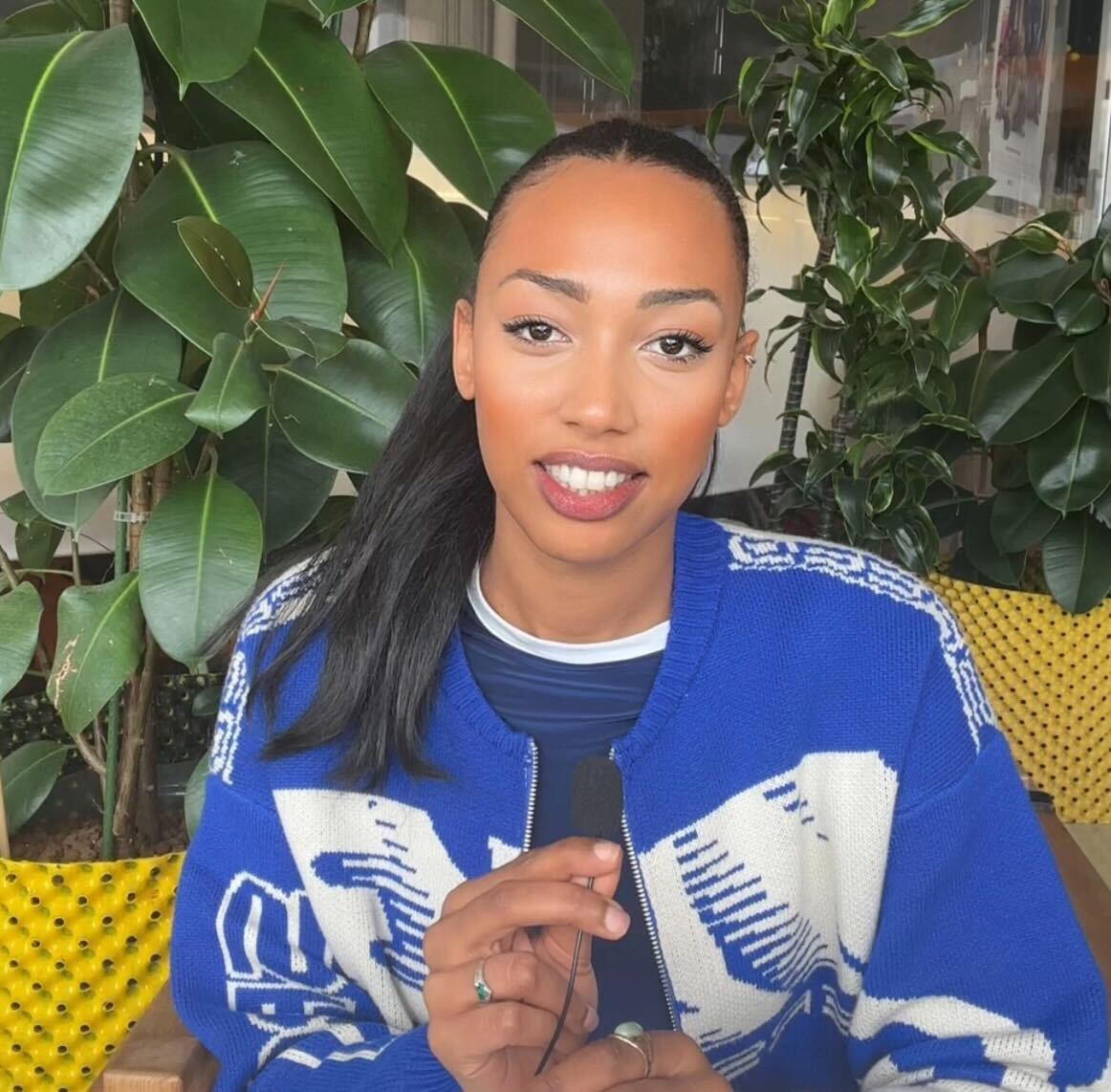My interview with a professional cuddler who earns £75 per hour

Ever wondered if your incredible gift at cuddling could be turned into a career? As someone who writes about Gen Z and their diverse interests for a living, I often explore their early career steps. Believe it or not, the idea of professional cuddling has come to mind. That’s why I’m on a mission to shed light on some of society’s most unconventional professions to bring those with no interest in climbing the corporate ladder the inspo they so desperately deserve.
To gain access to the fascinating (and, let’s be honest, slightly odd) world of professional cuddling, an industry where platonic embraces become therapeutic sessions, I reached out to no other than the founder of Europe’s very first cuddle therapy business.
Back before the industry was booming, Claire Mendelsohn, a seasoned massage therapist since 2004, found herself on a quest to offer more to her clients. Unsure of the missing piece, a revelation struck her while reading about a professional cuddler in the US. This inspiration subsequently sparked the birth of Europe’s inaugural cuddle therapy business in 2013. Mendelsohn, having walked the walk with real clients, crafted the first training course for professional cuddlers in 2015. The expert’s brainchild, Cuddle Professionals International (CPI), aims to establish regulation, ethical practices, and a trove of certified professionals.
How do you become a professional cuddler?
When I sat down with Mendelsohn, my focus centred on one burning question: “What’s the secret to becoming a professional cuddler?”
Mendelsohn responded: “Ours is an online course that takes approximately three months to complete. CPI was the first to offer an accredited and insurable professional cuddler training course for those wishing to become cuddle professionals. Professional accreditation is vital for any type of therapist or practitioner and being a CPI-accredited cuddle professional shows our clients that we take our profession seriously and practice to the highest standard.”
The expert continued: “This is a comprehensive course that equips our students with all the knowledge and skills they’ll need to become successful professional cuddlers. Completing the course enables them to practice cuddling as a legitimate therapy modality, and ethically and responsibly. We are accredited by the Complementary Medical Association, who work at the government level in the UK, and by the International Institute for Complementary Therapists. Our diploma is therefore recognised for both professional practice and insurance.”
CPI is not just about learning, it’s about joining a league of cuddle connoisseurs who take touch seriously. In the cuddle revolution, this is where you earn your stripes and the certification isn’t just a piece of paper, it’s a ticket to a world where touch isn’t just felt, it’s mastered.
How much do professional cuddlers charge?
Professional cuddlers typically charge around £75 per hour for their services, reflecting the average compensation in this niche. This rate encapsulates the unique and therapeutic nature of their work, providing clients with a comforting experience at a standard industry price.
The dos and don’ts of professional cuddling
However, with great power comes great responsibility and my inquisitive mind couldn’t resist digging deeper into the cuddle code—you know, the dos and don’ts when you’re wrapped up in a professional cuddling session. So, I popped the question: “Can you explain the boundaries and guidelines you follow during a professional cuddling session?”
Mendelsohn replied: “As therapeutic touch therapists, we have clear terms and conditions that we agree with all clients. These include a dress code (loose, comfortable clothes and no underwear) and a code of behaviour (no kissing, no touching of areas that a bathing suit would cover). Our service is entirely platonic.”
She continued, “For example, an interaction that is free from intentionally arousing or engaging in sexual activity for all parties. Platonic specifically excludes but is not limited to nudity, genital stimulation, exchange of bodily fluids including saliva, and touch of hands on any area commonly covered by undergarments. These are all covered in the course.”
View this post on Instagram
It’s the platonic nature of the service, paired with clear communication, and adherence to boundaries that foster a safe and comfortable environment of trust.
Yet, my curiosity wasn’t fully satisfied. I wanted to know the secrets to create a safety nest during these cuddle escapades with a complete stranger. So I prodded further.
Because, let’s be real: when you’re diving into the world of professional cuddling, safety isn’t just a checklist. Mendelsohn spilt the beans, and it turns out it’s more than just fluffing pillows: “We acknowledge the inherent worth and individuality of clients by not discriminating solely based on gender, religion, nationality, race, disability, sexual preference, sexual orientation, body size, and age (above the age of consent). We also make verbal and written statements that are true and accurate about what we offer as a cuddler, and about the cuddling profession while acknowledging the confidential nature of the client relationship and respecting each client’s right to privacy within the constraints of the law.”
While talking to Mendelsohn, it became clear that the clientele seeking professional cuddling services has a wide spectrum. From those simply looking for human company to survivors of abuse or individuals coping with PTSD, the need for touch resonates across various backgrounds and ages.
When I asked about what type of clients Mendelsohn normally gets, her answer was simple: “It can really vary—a spectrum of humanity from the 20s to the 80s, men and women, recovering from cancer, battling divorce blues, or simply needing some human touch. Loneliness is an uninvited guest for many—around 40 per cent of adults admit to it. Some are touch-deprived forever, while others carry the weight of PTSD or past abuse. Cuddling isn’t just a service; it’s a modern need, a remedy for the touch-starved souls navigating the digital age.”
And then, she painted a vivid picture of a transformative encounter: “Let me share a touching story [about] a young man in his late 20s, juggling autism and ADHD. After our sessions, he found solace in the platonic embrace, a missing piece that traditional therapy couldn’t provide. It’s like his mind craved a language only touch could speak, unveiling the extraordinary impact of therapeutic cuddling.”
During our conversation, it was clear how Mendelsohn was able to navigate the intricacies of emotional connections, and how as a professional cuddler she was prioritising open communication. The interview unfolded the impactful role Mendelsohn plays in supporting those in need through cuddling. Yet, a lingering question remained: What if someone forms a profound attachment with their cuddler? What about the other way around? How does a professional cuddler handle such intense emotional bonds?
“Communication,” Mendelsohn told me. “Lots and lots of communication. It might be helpful to have a non-cuddling session or two to talk it through. Hugs at the start and end, but no actual cuddling. We make sure the client understands something about transference, and the confusion that can arise around normal emotions that close physical contact can bring: in other words, you can’t fall in love with your cuddle professional because you don’t know them, but you can believe you have. If we and our client can’t get past it, we ultimately have to stop sessions. If it comes to that, we manage the process carefully. Endings are important. We have a module about attachment and transference in our course.”
As we wrapped up our chat, I asked Mendelsohn how she keeps on the pulse of ethical practices in the professional cuddling realm. “Research and networking,” she replied. “I was a touch therapy trailblazer. As the first person in Europe to offer cuddle therapy and a comprehensive training course for cuddle therapists, I have been instrumental in establishing the framework within which most of today’s touch therapists work.”
Mendelsohn’s journey from a massage therapist to a touch therapy innovator showcases the evolution of a profession that goes beyond physical touch, unlocking the hug economy and offering solace to those in need. In an era marked by digital connections, the profession carves a niche for itself by providing a genuine, human connection that transcends societal barriers.





